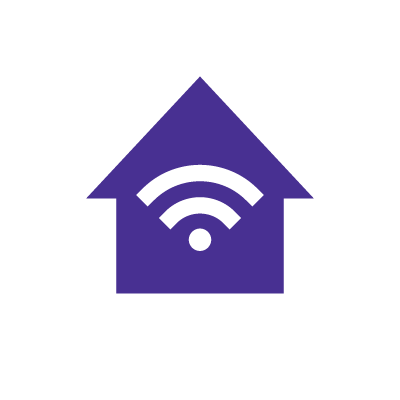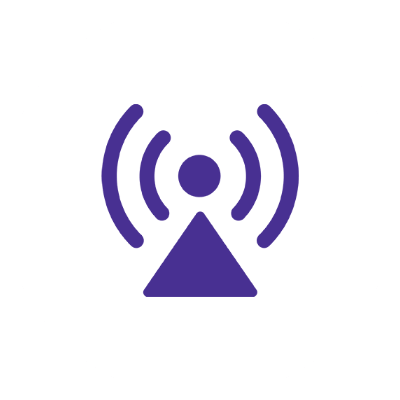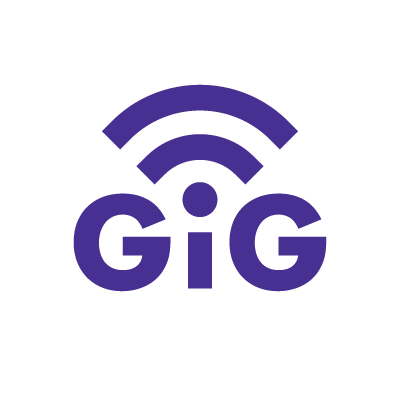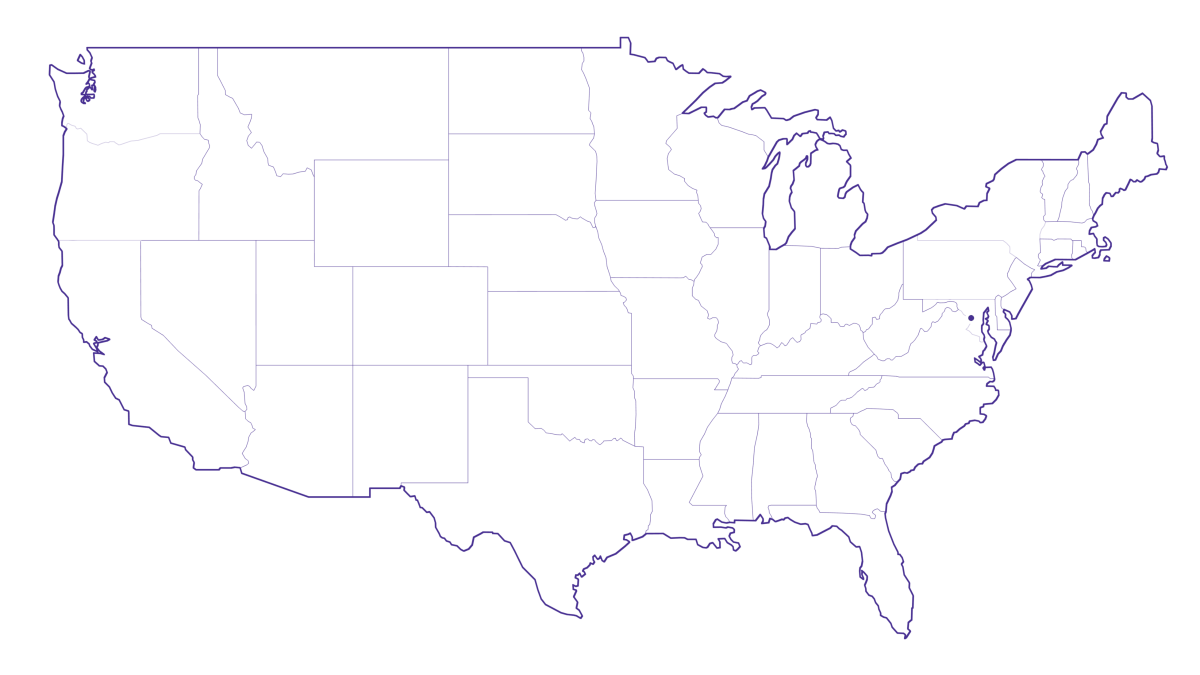Do I need 600 Mbps internet? (and what is it good for?)

How much internet speed do I need? Knowing which internet speed is best can be difficult with so many plans available.
In this article, we’ll explain what 600 Mbps internet is and what it’s best for to help you choose the right internet speed.
What you'll learn:
- What is 600 Mbps internet?
- Is 600 Mbps fast enough?
- 600 Mbps vs. 5G home internet
- Is 600 Mbps worth it?
- How much speed do I really need?
- 600 Mbps internet equipment requirements
- How do I get 600 Mbps internet with Astound?
- Bottomline: Is 600 Mbps good enough?
- Frequently asked questions
- Looking for more topics?
Switch & save
Astound is the #1 cable ISP
Stream live content, work, surf, game and connect to multiple devices with speeds up to 1500* Mbps through our ultra‑reliable fiber‑powered network.*

What is 600 Mbps internet?
600 Mbps is a high-speed internet connection capable of transferring 600 megabits per second. A single megabit contains 1 million bits, meaning 600 Mbps transfers data at 600 million bits per second.
A 600 Mbps internet connection enables you to:
- Connect multiple devices simultaneously.
- Gain access to cloud services and learning platforms.
- Link smart devices and automate your home.
- Have multiple users stream HD and 4K content.
- Engage in online gaming experiences like VR, AR, console and PC.
- Download large multimedia files.
While most people consider download speeds when choosing internet plans, upload speeds are crucial for tasks like large file uploads, video conferencing and online gaming.
Keep in mind that internet speeds may vary depending on network traffic, device performance and WiFi connection type.
Is 600 Mbps fast enough?
600 Mbps is fast enough for most households with up to six users. However, whether or not the speed is fast enough for your home will depend on the bandwidth consumed by each user and their devices.
Here’s a breakdown of what a 600 Mbps internet connection can handle:
Gaming internet
Get the total gaming solution
How you game is up to you. One thing is clear–you need fast and ultra-reliable internet. Get fiber‑powered internet that delivers Gig speeds no matter what high-bandwidth activity you choose.

For gaming
Most online games require internet speeds of 5 to 20 Mbps. 600 Mbps provides adequate bandwidth for gaming in homes with multiple users across different devices.
With a 600 Mbps connection, you’ll be able to:
- Play online games with multiple PCs, consoles, or other gaming devices.
- Download large games and version updates.
- Stream 4K video on platforms like Netflix, YouTube, or Twitch.
If you’re a serious gamer who plays and streams in 4K, you’ll want speeds higher than 600 Mbps. Moreover, consider investing in a dedicated gaming router to optimize your speeds, reduce latency and create high-quality streaming experiences.
Learn more: What internet speed do I need for gaming?.
For streaming
600 Mbps is great for streaming HD and 4K content and other high-bandwidth activities like VR and AR streaming.
Platforms like Netflix require 15 to 25 Mbps to watch shows in 4K quality. VR streaming can demand up to 100 Mbps of bandwidth.
With a 600 Mbps connection, you will be able to stream:
- 4K videos and high-fidelity music across multiple devices.
- Virtual Reality (VR) or Augmented Reality (AR) experiences.
- High-quality gameplay videos to an online audience on YouTube or Twitch.
- High-quality video and audio to viewers on social media platforms like TikTok or Instagram
The number of people and devices in your home determines the quality of your streaming. Consider a higher tier, like the 1500 Mbps speed plan, if you’re worried about bandwidth.
Not sure which speed is best for you yet? Find your speed.
WiFi that just works!
WiFi plans for any home
Tiny, large or somewhere in between; find WiFi coverage to fit any space. Blanket your entire home with a fast and ultra‑reliable connection.

For working from home
A 600 Mbps internet connection will help facilitate online remote work. For example, video conference platforms like Zoom require speeds of 3.8 Mbps for HD calls.
With 600 Mbps, you will be able to do work tasks like:
- Downloading large datasets.
- Accessing VR apps or AR training resources.
- Using cloud-based development platforms for remote software developers.
Talk with your ISP about your internet habits if your work tasks require more bandwidth
What internet speed do I need to work from home?
For learning online
600 Mbps is sufficient for remote and online learning.
Online learning management systems like Canvas and Blackboard require minimum speeds of 512 kbps and 750 kbps, respectively.
With 600 Mbps, students will be able to:
- Attend and participate in high-quality live video lectures.
- Playback video, audio and other class-related content.
- Upload and download assignments, e-books, videos and other multimedia.
- Participate in high-bandwidth, interactive experiences like online labs or VR and AR learning.
If your household needs to provide fast speeds for multiple students and support various people working from home, look into higher-speed options.
For hosting events
Hosting virtual or in-person events with many attendees means you’ll need a fast internet connection.
These activities usually involve real-time video streaming, competitive online gaming competitions, or other communal experiences around sports, entertainment, or music.
With a 600 Mbps connection, you’ll benefit from:
- Access to virtual event platforms, like Hopin or Zoom.
- Fast live streams for participants.
- The ability to host multiple online gaming sessions.
- High-quality audio and video streams.
- Multi-device support.
If you’re hosting an online event, the platform, number of guests and connected devices will impact your internet’s performance. Similarly, if you’re hosting an in-person event, guests and their specific internet needs during the event can put demand on your internet speed as well.
Are you concerned about bandwidth for your online or in-person events?
Look into higher-speed internet options from your ISP.

Mesh WiFi with
eero Secure
Enhanced Whole Home WiFi uses multiple routers (or eeros®) to boost range, speed, and stability, while eero Secure, included at no extra cost, offers parental controls, ad blocking, and internet backup for constant connectivity.
For smart devices and IoT devices at home
Smart home and IoT devices like TVs, locks, refrigerators, thermostats and cameras require a minimum internet speed of 25 Mbps download and 3 Mbps upload. A 600 Mbps internet connection is a good option if your household has multiple smart devices, personal devices and users.
With 600 Mbps, your smart devices and IoT devices will:
- Scale with your tech, as 600 Mbps can accommodate more devices.
- Integrate to create a smart environment within the home.
- Execute commands and respond to automated tasks.
- Receive updates in real-time and share data between devices.
- Download high-resolution audio, image, or video feeds.
Smart devices, unlike personal devices, are “always on,” accessing your bandwidth. Each additional smart home or IoT device may need up to 10 Mbps. If you’re concerned you might exceed your Mbps, look into higher speeds to keep your devices online.
For your apartment
Whether a 600 Mbps connection is enough for an apartment depends on the number of people, devices and internet habits.
Generally, 600 Mbps provides speed for gaming, working from home and online learning for an apartment. If you’ve just moved, find out how to set up internet and WiFi in a new apartment.

For a large home
Large homes hold more people, personal devices and smart devices such as smart TVs, cameras, or voice assistants.
A 600 Mbps connection can host multiple users and devices. However, a surge in users, devices, or integrated tech could slow your internet speed.
In addition, large houses may contain dead zones with poor internet coverage, such as hallways, balconies, or stairways. If you’re worried about dead zones, consider using a mesh system to expand coverage.
Astound’s Whole Home WiFi expands WiFi coverage, reduces signal interference and optimizes the performance of your wireless devices.
Moreover, mesh WiFi routers are flexible, modular and moveable. Want more coverage throughout your home? Just place an eero where you want a connection.
Learn more: How to set up your internet in a new home
The technology gap
You deserve better internet
5G Home Internet Fixed Wireless Access uses radio waves which are impacted by obstacles like buildings and trees, resulting in reduced reliability.

600 Mbps vs. 5G home internet
600 Mbps and 5G home internet are different technologies that offer high-speed internet. They each present distinct characteristics, advantages and limitations.
Fiber and cable connections are wired connections, meaning fewer disruptions. Most urban and suburban areas already have fiber or cable infrastructure.
- 600 Mbps fiber or cable connections offer consistent speeds, reliability and broad coverage.
- The cost and value of 600 Mbps can vary depending on your ISP, but providers usually bundle internet, mobile data and TV.
5G internet is wireless, unlike fiber or cable. It operates on high-frequency bands transmitted by cell towers. 5G internet is faster and has lower latency than 3G or 4G LTE networks.
However, distances between cell towers, weather events and network congestion cause problems for 5G home internet users.
Also, 5G internet is a newer technology, meaning coverage is limited to urban areas with existing 5G infrastructure.
Check for service
Get internet service that delights
Astound is ranked among the best for overall satisfaction*. When it comes to download speed and quality, Astound more than delivers.

Is 600 Mbps worth it?
A 600 Mbps internet connection is fast, reliable and cost-effective. However, the value for your household depends on your needs, the number of connected devices and your online activities.
600 Mbps speeds enable you to:
- Browse the internet on multiple devices with concurrent users.
- Stream 4K and 8K videos.
- Play online multiplayer games in your household.
- Attend live classes or access video learning platforms.
- Host in-person and online events with multiple users.
- Work from home and participate in video conference calls.
- Create a network of in-house smart devices and IoT devices.
- Broadcast HD and 4K video content or gameplay to online audiences.
- Access VR and AR experiences.
When should you consider upgrading to a faster internet speed?
It may be time to upgrade to a faster internet speed if you experience any of these issues:
- Network congestion.
- An increase in users in your household.
- An increase in devices in your household.
- Frequent buffering when streaming.
- Long loading times when streaming.
- Latency or lag while gaming online.
- Slow uploads or downloads.
- Internet connectivity issues.
- Poor video or audio call quality.
- Failure of smart or IoT devices.
Before deciding to upgrade, evaluate your internet requirements.
It might be beneficial to do regular speed tests to determine whether your current provider delivers the advertised speeds.
Be sure to optimize your WiFi. You’ll improve your network’s performance, minimize channel interference and rebalance your device load.
Will my devices be capable of receiving 600 Mbps?
You won’t be able to connect to the 600 Mbps internet connection if you have older devices with outdated hardware or network interface cards. However, most modern devices that meet the latest WiFi standards can handle 600 Mbps.
Find your speed
What speed do you need?
Maybe you just need the essentials—or maybe you need to unleash the ultimate internet speed. Explore your options to get the best experience for every device in your home.

How much speed do I really need?
To determine your internet speed connection needs, ask yourself the following questions:
- How many people in my household will use the internet simultaneously? Consider how many people will be using the internet. Each user adds to the demand for bandwidth.
- What are the online access needs for my household? Identify the primary online activities people in your home typically perform, such as streaming, gaming, video conferencing, or browsing.
- Which devices will be connected? Determine the number and types of devices used, like smartphones, laptops, IoT devices and gaming consoles.
- Will anyone be working remotely or learning online? If anyone in your household works from home or takes classes online, consider the bandwidth required for video conferencing, file sharing and other work-related tasks.
- Will anyone stream HD or 4K videos? A faster internet connection is essential for bufferless playback if you frequently stream high-quality videos.
- Is gaming a priority for anyone? Gamers may require faster speeds for increased performance.
- Does the house have smart home devices? IoT devices, like smart thermostats or security systems, will impact your accessible bandwidth
- Are large files frequently downloaded or uploaded? Consider the need for faster download and upload speeds if you work with large files or use cloud services.
- Am I satisfied with my current internet speeds? Identify any pain points or limitations you may have.
- What are my future internet needs? Do you anticipate potential changes in your internet use? Will you be adding more devices or engaging in more data-intensive activities?
- What internet plans are available to me now? Check with local internet service providers to see what plans and speeds are available near you.
Ensure you balance performance, cost and your household’s needs to choose the best plan.

eero Plus
eero Plus protects your family online with a password manager to safely create, store and share passwords, virus and malware protection and a VPN that lets you browse the web safely and securely.
600 Mbps internet equipment requirements
You’ll need the following equipment to optimize your 600 Mbps fiber connection:
-
- Fiber or DOCSIS compatible modem: A fiber or DOCSIS modem is required to convert optical signals from a fiber/COAX line into electrical signals so your router and devices can understand each other. Astound’s installation process includes a modem. But you can supply your own modem if it meets our compatibility requirements.
- A router: A high-quality router supporting high-speed connections is necessary to distribute the internet signal to your wired and wireless devices. Look for a router supporting Ethernet ports and modern WiFi standards like 802.11ac or 802.11ax (WiFi 6).
How do I get 600 Mbps internet with Astound?
Check for internet service availability in your area.
Bottomline: Is 600 Mbps good enough?
600 Mbps is fast. It provides enough bandwidth to support multiple users simultaneously streaming 4K video, gaming online and downloading large files.
Surges in users, however, may affect your speeds.
For serious online gamers or households with many people and multiple devices, higher speeds, like 1500 Mbps, may be necessary. Talk with your ISP about your specific needs to find the right speed.
Build your plan
Your perfect plan is just a click away
Get the speeds, WiFi, mobile and TV plans you need all at an affordable price. Bundle your services with Astound and see how much you can save.

Frequently asked questions
Does Astound offer 600 Mbps internet plans?
Yes, Astound offers 600 Mbps internet plans.
Is 600 Mbps slow?
For most activities, 600 Mbps is considered high-speed internet. However, your internet may become congested during peak usage hours if multiple users and devices compete for bandwidth.
Is 600 Mbps WiFi good?
600 Mbps WiFi is great for streaming 4K videos, online gaming across multiple devices, video conferencing, downloading large media files and working from home. If you’re concerned that 600 Mbps won’t be enough, look into higher speeds, like 1500 Mbps.
*Internet speeds may vary & are not guaranteed. Certain equipment may be required to reach advertised speeds. DOCSIS 3.1 modem with 2.5GE physical LAN port is required for 1 Gigabit speeds and higher. See astound.com/yourspeed for why speeds may vary. To view Astound’s FCC Network Management Disclosure see astound.com/policies-disclaimers. Limited time offer, subject to change without notice. Advertised promotional price valid for duration of the stated promotional period from time of service activation. Regular rates apply after promotional period ends. Equipment not included and is extra. Modem required for Internet service. Enhanced Wi-Fi or Whole Home Wi-Fi (eero) not included and is add’l. Offer includes a monthly discount for enrollment in both automatic payments (autopay) & paperless billing (e-bill). Discount of $10 applies with automated bank account deduction or a discount of $5 applies with automated credit/debit card payment. Valid email address required. Must complete enrollment in autopay and e-bill within 30-days of placing the order. Without enrollment, the discount does not apply. Discount appears on bill within 3 bill cycles after enrolling. If either autopay or e-bill is canceled, services are changed, or the account is not in good standing, then the monthly discount will be discontinued. Offer valid only for new residential Astound customers or previous customers with an account in good standing who have not had Astound service within the last 60 days. Any add’l services, equipment, premium channels & other tiers of service are subject to an add’l charge & regular increases. A one-time activation fee of $14.99 (in addition to any installation fees) will be charged & is subject to change. Add’l fees apply for taxes & surcharges, and are subject to change. WA RESIDENTS: unless otherwise specified, price does not include a 2% Regulatory Administration Fee. For details about taxes, fees & surcharges visit astound.com/fees. No early termination fees apply in the event service is terminated in advance of the promotional end date. Customer is responsible for any accrued service charges in the event service is canceled. Subject to credit check. Not all services & speeds are available in all areas. A multi-product discount may be available to qualifying addresses with a subscription to mobile, TV, and 600 Mbps Internet or higher. Discounts will be reflected in your order cart at time of purchase, if available. Other restrictions may apply. All services are governed by the Astound Customer Terms & Conditions that can be found at astound.com/policies-disclaimers. © 2025 Radiate HoldCo, LLC d/b/a Astound Broadband. All rights reserved.
While we have made every attempt to ensure that the information contained in this site has been obtained from reliable sources, Astound is not responsible for any errors or omissions, or for the results obtained from the use of this information. All information in this site is provided “as is”, with no guarantee of completeness, accuracy, timeliness and without warranty of any kind, express or implied, including, but not limited to warranties of performance, merchantability and fitness for a particular purpose. Certain links in this site connect to other websites maintained by third parties over whom Astound has no control. Astound makes no representations as to the accuracy or any other aspect of information contained in other websites.
eero Plus is available for an additional $9.99/month and requires subscription to whole home WiFi powered by eero.


















